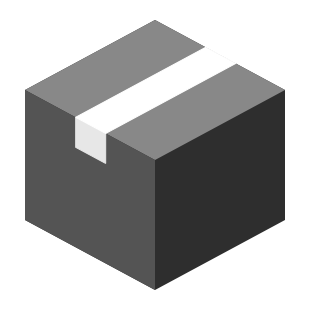Package Summary
| Tags | No category tags. |
| Version | 0.0.0 |
| License | BSD-2-Clause |
| Build type | CATKIN |
| Use | RECOMMENDED |
Repository Summary
| Description | Environment Descriptor |
| Checkout URI | https://github.com/tue-robotics/ed.git |
| VCS Type | git |
| VCS Version | master |
| Last Updated | 2025-04-18 |
| Dev Status | UNMAINTAINED |
| CI status | No Continuous Integration |
| Released | UNRELEASED |
| Tags | robot navigation sensor ros worldbuilding |
| Contributing |
Help Wanted (0)
Good First Issues (0) Pull Requests to Review (0) |
Package Description
Additional Links
Maintainers
- Rein Appeldoorn
Authors
ED: Environment Descriptor
Introduction
ED - Environment Description - is a 3D geometric, object-based world representation system for robots. At the moment different ED modules exist which enable robots to localize themselves, update positions of known objects based on recent sensor data, segment and store newly encountered objects and visualize all this through a web-based GUI.
Tutorials
All ED tutorials can be found in the ed_tutorials package: https://github.com/tue-robotics/ed_tutorials
Why use ED?
- ED is one re-usable environment description that can be used for a multitude of needed functionalities. Instead of having different environment representations for localization, navigation, manipulation, interaction, etc, you now only need one. An improvement in this single, central world model will reflect in the performances of the separate robot capabilities.
- ED is an object-based, geometrical world representation. As opposed to occupancy grids, octomaps, high-density monolithic meshes and the like, ED allows the user to use object-based, semantic statements such as ‘inspect the objects on top of the table’ or to ‘navigate to the couch’, while the geometrical representation allows the robot to still avoid obstacles - known and unknown - that it encounters on its path.
- The world geometry and objects can easily be specified with a set of easily accessible human-readable files, re-usable models, heightmaps, primitives, etc.
- ED has a plugin system. In itself, ED is ‘just’ a data structure containing a world representation. Functionality is added through plugins, which run concurrently and query and update the world model in a thread-safe manner. This makes the system easily extendable.
- ED’s default localization module consists of a fast particle filter implementation and sensor models which always take into account the most recent state of the world. This means that if the world representation improves while the robot is running, localization becomes better. The localization module is more efficient and accurate than the well-known AMCL-module and no separate occupancy grid is needed.
- The sensor_integration module enables object updates: using data from a depth sensor such as the Kinect, positions of known objects, such as pieces of furniture, can be updated. This allows the robot to successfully interact with its environment, even if the world model specified by the user contains errors.
- The sensor_integration module also enables object segmentation: the geometrical knowledge about the world enables fast, reliable and efficient object segmentation. This enables the robot to “find all objects on top of the table” or “inside the cabinet”.
- Though not yet released, ED has modules for real-time, on-line generation of costmaps that can be used directly by existing navigation modules such as MoveBase. Whenever the world model representation changes, the costmaps will instantly reflect the change.
- ED can be visualized using a web-based GUI. This enables users to monitor the state of the world using a large variety of systems, including PC’s, smart phones and tablets.

Installation
Requirements:
- Ubuntu (18.04 or newer)
- ROS (Melodic or newer)
We assume you have successfully installed ROS and set-up a Catkin workspace. Check out the following packages in your workspace:
cd <your_catkin_workspace>/src
git clone https://github.com/tue-robotics/ed.git
git -C ed submodule update --init --recursive
git clone https://github.com/tue-robotics/ed_object_models.git
git clone https://github.com/tue-robotics/ed_msgs.git
git clone https://github.com/tue-robotics/code_profiler.git
git clone https://github.com/tue-robotics/geolib2.git
git clone https://github.com/tue-robotics/rgbd.git
git clone https://github.com/tue-robotics/tue_config.git
git clone https://github.com/tue-robotics/tue_filesystem.git
git clone https://github.com/tue-robotics/tue_serialization.git
ED is able to read (a subset of) SDF, therefore the SDF library is used. The minimal required version is 4.4. On ubuntu 16.04, you need to add the OSRF apt sources (link), as the released version on the main channel is just 4.0.
To install the library (version 4.X): libsdformat4-dev
Install the other dependencies by rsolving them via rosdep.
This should be sufficient to successfully compile ED:
cd <your_catkin_workspace>
catkin_make/catkin build
ED Extensions
Localization
A fast particle filter implementation and sensor models for robot localization which always take into account the most recent state of the world.
- https://github.com/tue-robotics/ed_localization.git
Visualization
Extension for visualizing the current world model state. The GUI server exposes ROS API’s that can be used by various clients. Example clients are the ed_rviz_publisher of the ed_gui_server package and the ed_rviz_plugins/WorldModel. display.
- https://github.com/tue-robotics/ed_gui_server.git
- https://github.com/tue-robotics/ed_rviz_plugins.git
Sensor integration
Plugins for integrating sensor data into ED, e.g. Lidar, RGBD
- https://github.com/tue-robotics/ed_sensor_integration.git
Navigation
Extension for publishing occupancy grids and calculating map navigation constraints.
- https://github.com/tue-robotics/ed_navigation.git
Perception
Extension for classifying entities based on their attached RGBD measurements.
- https://github.com/tue-robotics/ed_perception.git
MoveIt
Extension for exporting meshes to MoveIt
- https://github.com/tue-robotics/ed_moveit.git
Wiki Tutorials
Package Dependencies
| Deps | Name |
|---|---|
| cmake_modules | |
| catkin | |
| roslib | |
| catkin_lint_cmake | |
| code_profiler | |
| diagnostic_updater | |
| ed_msgs | |
| geolib2 | |
| kdl_parser | |
| orocos_kdl | |
| pluginlib | |
| rgbd | |
| rgbd_msgs | |
| rosconsole_bridge | |
| roscpp | |
| tf2 | |
| tf2_geometry_msgs | |
| tf2_ros | |
| tue_config | |
| tue_filesystem | |
| tue_serialization |
